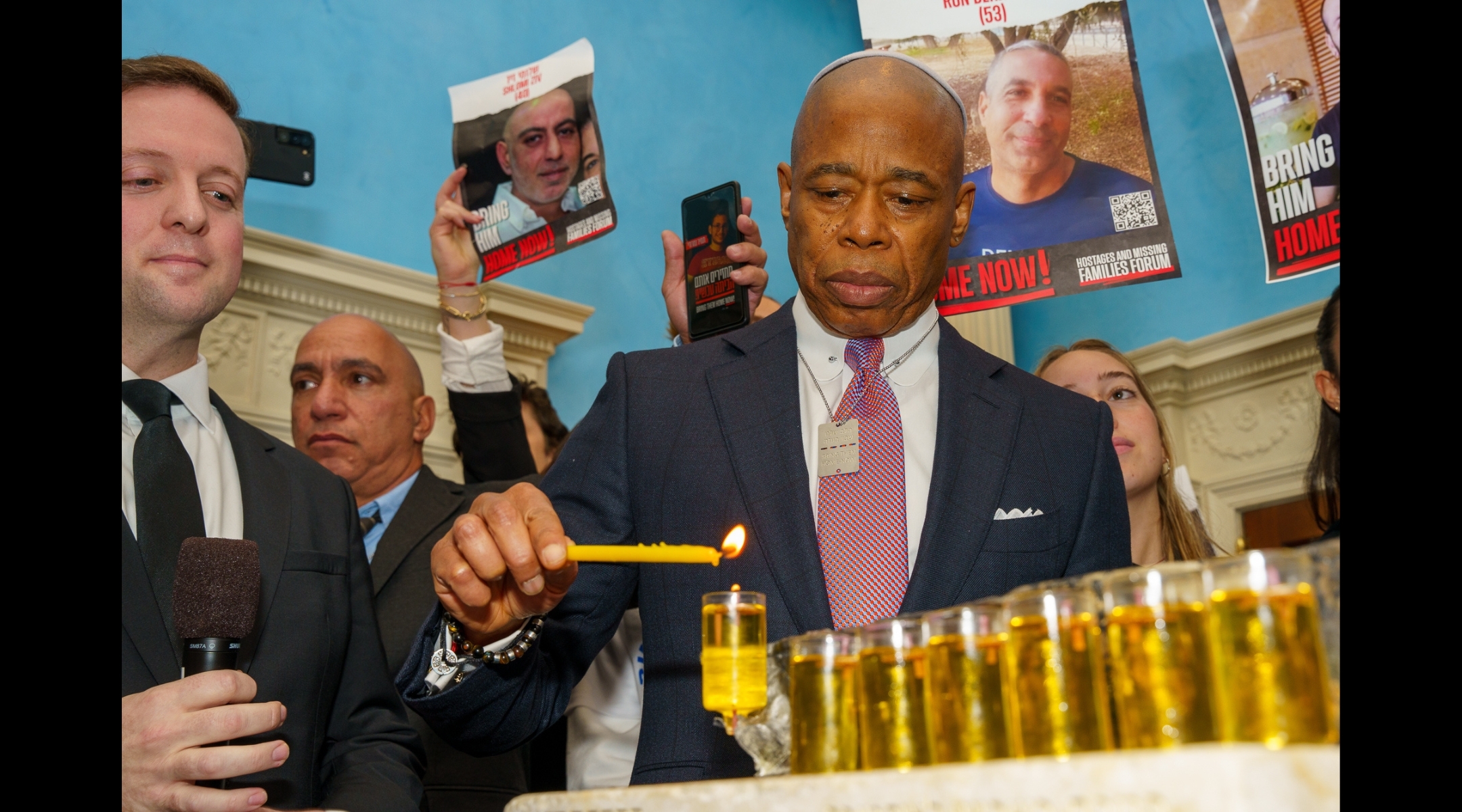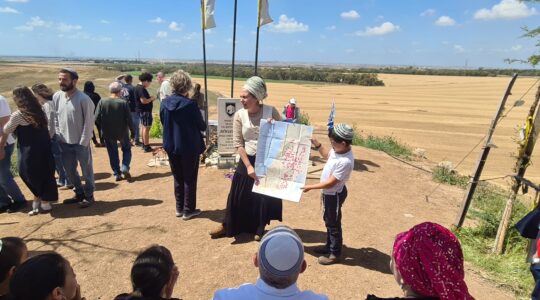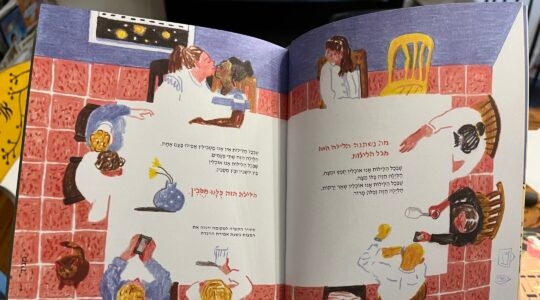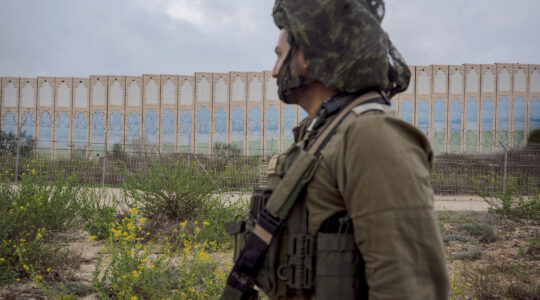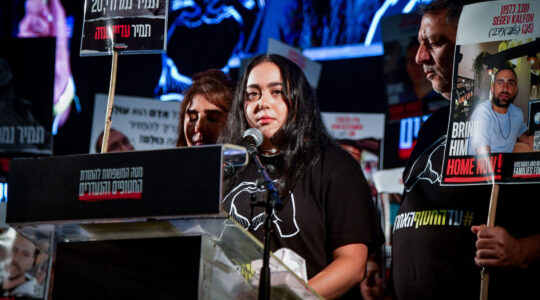(JTA) — When New York City’s mayor lit Hanukkah candles with some of his Jewish constituents this week, he didn’t turn to a menorah with a long local history. Instead, he used one crafted from materials reclaimed from the Israeli music festival ravaged on Oct. 7, in what one person on hand called “a symbol of light, unity, and the perseverance of the Jewish people.”
The mayor, Eric Adams, wasn’t the only person to turn to the wreckage of Oct. 7 when lighting candles during Hanukkah, a holiday that celebrates an ancient Jewish victory over foes who sought to extinguish them. In the wake of the attack and in the shadow of the war it began, as well as a reported rise in antisemitism, Oct. 7-related menorahs have taken on special significance.
Here are the stories of three menorahs with ties to Israel’s devastated communities that have been lit up for Hanukkah this year.
From Kibbutz Be’eri, a rescued menorah offers a sign of hope
Tamir Hershkovitz lit his family’s menorah in the ruins of his childhood home in Kibbutz Be’eri on the first night of Hanukkah, Dec. 7. His parents, Maayana and Noah Hershkovitz, as well as his grandmother Shoshana Karsenty, had all been killed in the massacre.
The menorah belonged to his late grandfather, Yosef, who was a Holocaust survivor and partisan during World War II. An artist from Tamir Hershkovitz’s community created a large, golden replica of the family menorah and presented it to him and his sisters ahead of the candle-lighting in Be’eri, but they used the original that night.
In videos shared on social media, Hershkovitz sang traditional Hanukkah songs including “Maoz Tzur” and “Al Hanisim,” as well as “I Believe,” a song based on a poem by the turn-of-the-20th-century Hebrew poet Shaul Tchernichovsky. For years, many have said that “I Believe” could be an alternative national anthem to “Hatikvah“, and the song has taken on new meaning for families of those killed on Oct. 7.
“Once I sing, I’m happy. And now I’m happy,” Hershkovitz told Yediot Ahronot about lighting candles at the site of his family’s great tragedy. “I choose, for my parents, to be happy.”
The Hershkovitz menorah is not the only one to take on special significance at Be’eri, which was hit particularly hard on Oct. 7. In late November, with Hanukkah approaching, an Israeli photographer captured a man lifting the mangled remains of a family menorah from the ruins of a home on the kibbutz. From details the photographer offered in a Jerusalem Post essay, it is likely that the menorah came from the Avigdori-Shoham-Kipnis family. Two members of the family were murdered that day, as well as their caretaker; seven were taken hostage, of whom six were released last month.
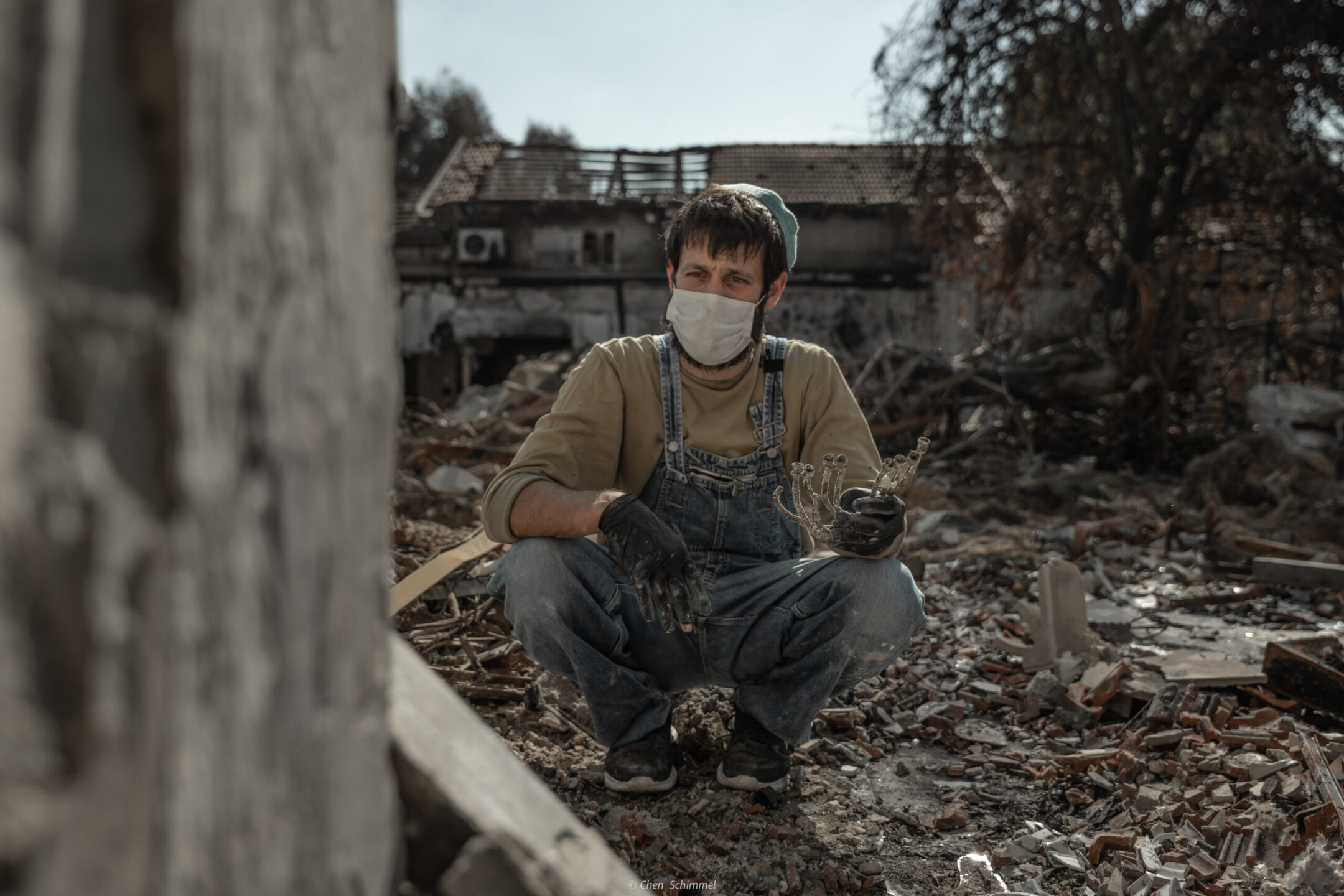
Family member whose father was murdered by Hamas terrorists on Oct. 7, 2023, searches in the rubble of his home for memories, in Kibbutz Be’eri, Nov. 30, 2023. (Chen Schimmel/Flash90)
“As the man cradles this symbol of his family’s past, the scene captures the heart of the Hanukkah spirit. It is a reminder that even in the depths of despair, the indestructible light of hope, tradition, and resilience flickers on,” wrote the photographer, Chen Schimmel. “In the discovery of this hanukkiah, we see a reflection of our own ability to find strength and light, even when surrounded by the ashes of destruction.”
A menorah from the rubble of Kfar Azza makes the rounds in Washington, D.C.
President Joe Biden proudly announced during the White House’s Hanukkah party on Monday that the menorah to be lit was the presidential residence’s first permanent one, fashioned from one of its beams. But he also acknowledged another menorah on display that night: a glass candelabra that a man had retrieved from his home in Kibbutz Kfar Aza, another hard-hit southern Israeli community.
“Like the ancient Hanukkah story, buried [in] piles of shattered glass, burned debris, and bullet-riddled walls, he pulled something from the ashes fully intact: a menorah,” Biden said, calling it “a symbol of the Jewish people that not only survive but heal, rebuild and continue to shine their light on the world.”
The menorah came from the home of Shai Hermesh, a former member of Israel’s parliament who spent 20 hours in a safe room with his wife and daughter and lost his son Omer, 47, during the attack. When Hermesh returned to the rubble of his home some time after the attack, he found his tefillin and the menorah, which was still intact.
Israeli President Isaac Herzog lent the menorah to Biden. On Tuesday, the menorah was used during a second D.C. ceremony, at the Israeli embassy.
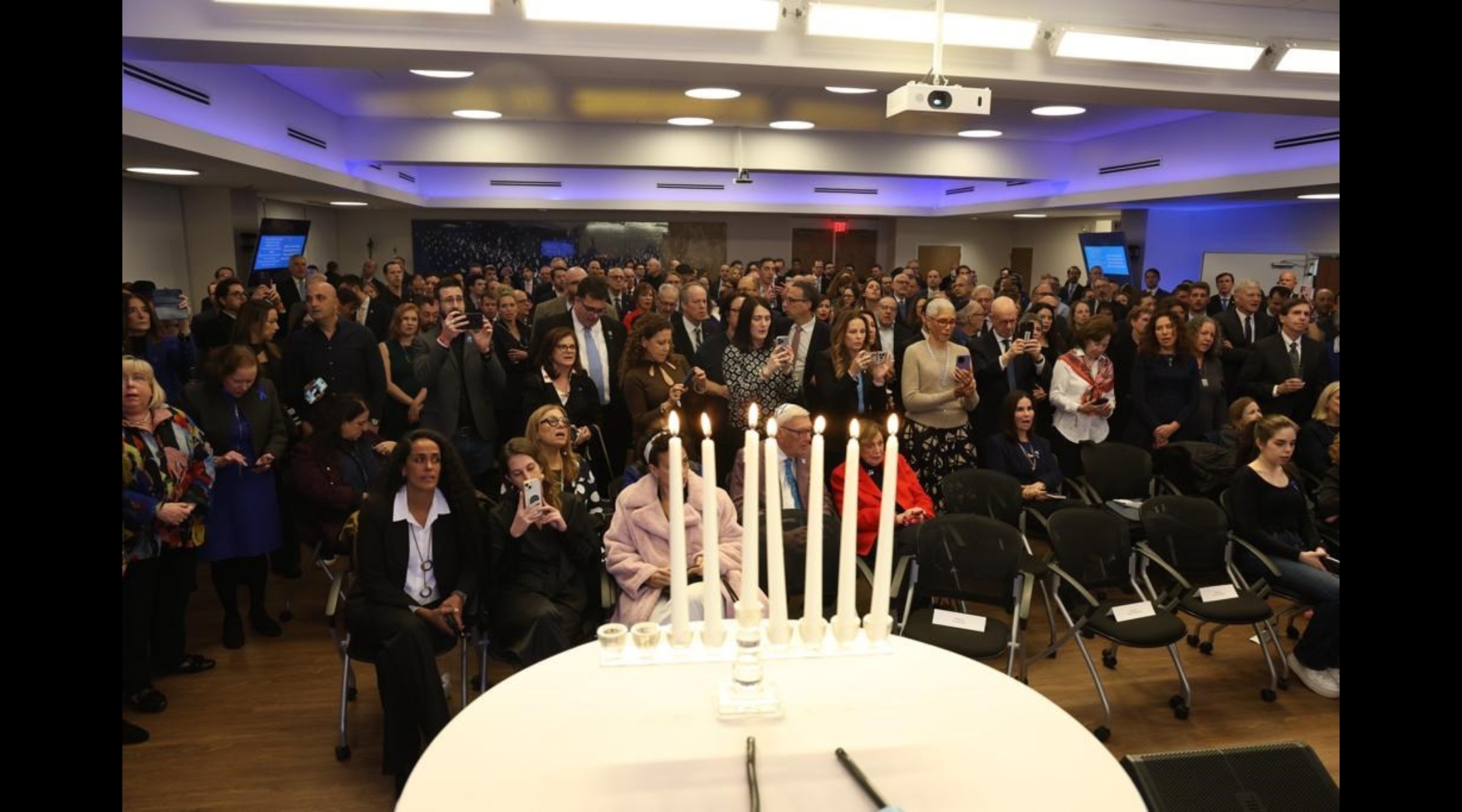
A menorah found in the rubble of Kfar Aza shines at a Hanukkah reception held at the Israeli embassy in Washington, D.C. on Tuesday, Dec. 12. 2023. (Shmulik Almany, Embassy of Israel)
A mangled license plate becomes a source of light in New York
It wasn’t just the menorah that made Oct. 7 a presence at Gracie Mansion, New York City’s mayoral residence, during its Hanukkah ceremony. Adams vowed to keep the city’s Jewish population safe amid a subsequent spike in reported antisemitic incidents.
“The evils of our October 7th, it broke all of our hearts,” he said. “And now we must go to a real place of healing each other and healing our city. And to my Jewish community, I want you to know you’re not alone.”
Then he helped light a menorah whose origins lay at one of the most piercing symbols of Israel’s loss, the Nova music festival where 360 young adults were murdered.
Eliyahu Skaist, a Jewish metalworker in the city, fashioned the menorah from the license plate of a car burned at the festival site, where many people were killed while trying to flee. He mounted the seared plate on Jerusalem stone, which was inscribed with a biblical verse from the prophet Micah vowing to rise again after a defeat.
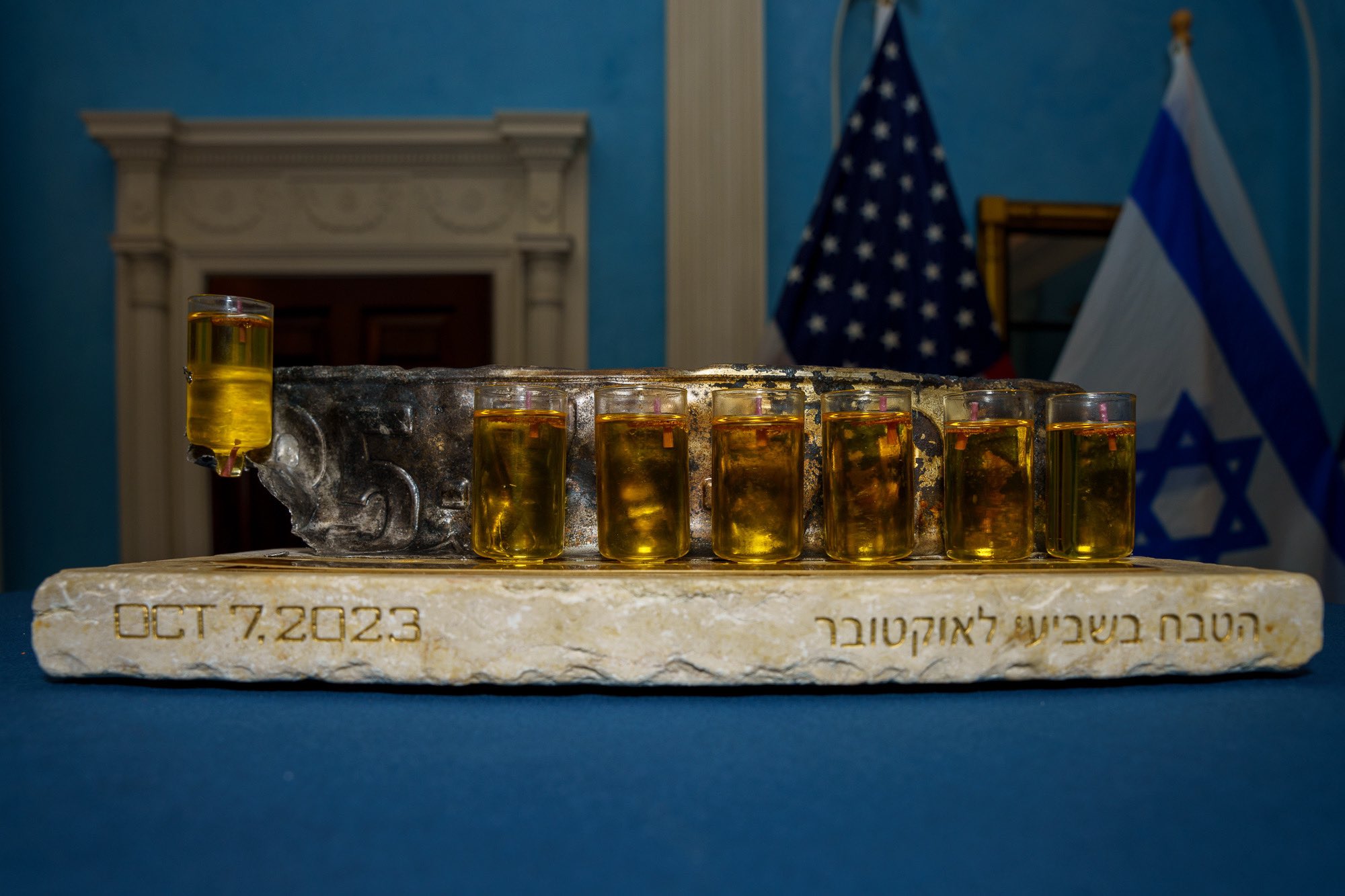
The menorah used at the Gracie Mansion Hanukkah ceremony Dec. 12, 2023, was fashioned from a license plate retrieved from the site of the Nova massacre in Israel. (Courtesy Mayor Eric Adams via X)
“Melding remnants of heartbreak with the bedrock of tradition, this menorah is not merely a commemorative piece, but a bold declaration,” tweeted Dovi Safier, an Orthodox writer who played a role in retrieving the plate. “It loudly proclaims the everlasting miracle of Jewish survival and hope, affirming the commitment to life and light over the forces of terror and darkness.”
JTA has documented Jewish history in real-time for over a century. Keep our journalism strong by joining us in supporting independent, award-winning reporting.
